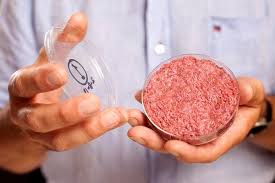Scientists at Duke University have developed a promising technique for studying and treating rare muscle diseases. Their breakthrough involves growing complex 3D muscle tissue from stem cells, allowing them to replicate patient symptoms and test potential treatments in a dish.
This research focuses on a particularly challenging illness called dysferlinopathy or limb girdle muscular dystrophy 2B (LGMD2B). Affecting only a small number of people globally, LGMD2B causes progressive muscle weakness, primarily in the legs and shoulders. Unlike other muscular dystrophies, there are currently no cures or approved treatments available.
The difficulty in developing treatments stems from the complexity of the disease. LGMD2B is caused by a genetic mutation affecting a protein called dysferlin, which plays a crucial role in muscle function. Additionally, the disease exhibits a unique characteristic – the buildup of fat within muscle fibers before degeneration.
Existing mouse models for LGMD2B show very mild symptoms compared to humans, making research slow and challenging. This is where Duke’s lab-grown muscle comes in.
By using induced pluripotent stem cells from LGMD2B patients, the researchers were able to grow functional muscle tissue in a controlled environment. This allowed them to isolate the effects of dysferlin on muscle cells, eliminating the complexities seen in animal models.
The lab-grown muscles mimicked many of the symptoms observed in real patients, including muscle weakness. Interestingly, the researchers discovered that this weakness wasn’t caused by structural issues, but by problems with calcium handling within the muscle cells.
The study also shed light on the fat accumulation within muscle fibers. They found that the lack of dysferlin disrupts the muscle’s ability to repair damage and efficiently burn fat for energy, leading to the buildup of fat deposits.
Furthermore, the researchers tested two existing drug candidates on the lab-grown muscle. These drugs, originally identified in mouse models, showed promise in preventing calcium leakage and promoting cell repair, leading to a partial restoration of muscle strength.
The team is now looking to expand their research by incorporating immune and fat cells into their muscle models. This will allow them to study the complex interplay between different cell types and gain a deeper understanding of LGMD2B’s progression.
Overall, this research using lab-grown muscles represents a significant leap forward in the fight against LGMD2B and other rare muscle diseases. It paves the way for more targeted treatment development and offers new hope for patients suffering from these debilitating conditions.












